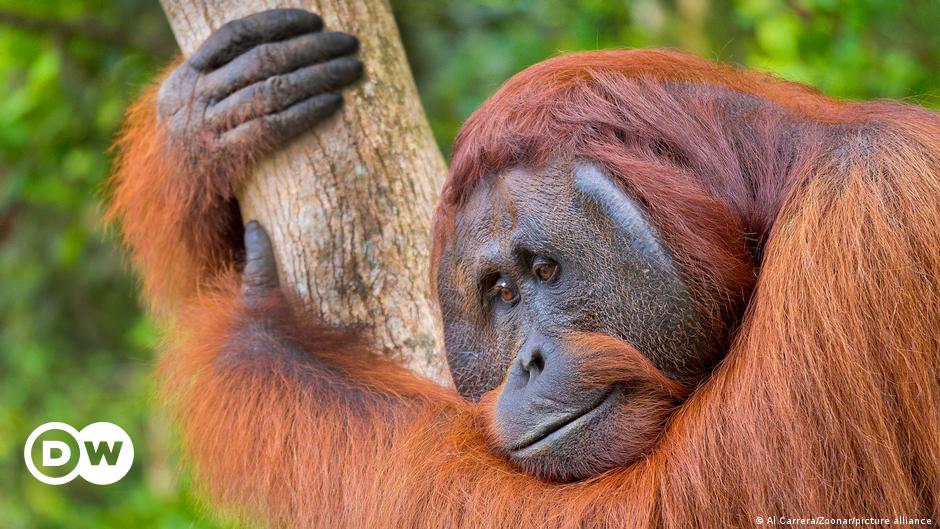What is biodiversity and why does it matter?

Biodiversity (from “biological diversity”) refers to the variety of living species and organisms — and their genes — that inhabit a particular area, from microscopic bacteria to small and large animals, from moss to towering trees.
This kaleidoscope of life forms the interconnected backbone of land, marine and freshwater ecosystems. These, in turn, provide food, medicine and resources and regulate the clean air, water and climate that sustains life on this planet.
Biodiversity supports everything in nature that allows sentient beings, including humans, to survive — and thrive.
Biodiversity changes, evolves and adapts over time. But humans are destroying and threatening habitats that sustain diverse lifeforms and, hence, rich ecosystems.
With a loss of biodiversity comes species population decline and extinction — and ultimately, a loss of the foundation of all life on Earth.
Why biodiversity is key for a healthy planet
Biodiversity is fundamental to the health and resilience of ecosystems, including their ability to withstand and recover from the impacts of extreme weather that is increasingly linked to climate change.
Ecosystems rich in biodiversity also provide a wide range of “services” such as crop pollination, nutrient cycling and climate regulation that are essential for the survival of all life forms.
A variety of different plant species improves soil fertility through better carbon and nitrogen cycling, which promises food security for humans and animals.
Biodiversity also extends to genetic diversity within species that improves adaptation to changing environmental conditions, including novel diseases or climate extremes.
Genetic diversity within crops and livestock is beneficial in terms of pest resistance, drought tolerance and higher yields.
Many of the medicines we rely on for myriad treatments are created from biodiverse plant species that also depend on healthy ecosystems.
Consequences of biodiversity loss
The natural extinction rate is about one species per million per year, but human-caused rates are in the tens of thousands annually.
“We are out of harmony with nature,” UN Secretary-General Antonio Guterres told world leaders in 2022. “Humanity has become a weapon of mass extinction.”
Around 30% of 150,000 plant and animal species assessed by biologists are at risk of extinction due to human-caused habitat destruction, poisoning from pesticides, or hunting for profit and sport.
The last time so much flora and fauna was lost was when an asteroid hit the planet 66 million years ago and wiped out 75% of all species.
The World Wildlife Fund’s 2024 Living Planet Report found that global populations of vertebrate species have plummeted 73% since 1970.
Freshwater systems were hit hardest with an 85% decrease, followed by a 69% drop in land and 56% in Earth’s oceans. Geographically, Latin America, the Caribbean and Africa saw the worst declines.
Dangerous ecological tipping points are approaching from which there is no return unless biodiversity decline is halted, warned WWF.
Amazon deforestation alone could wipe out more than 10,000 species in Brazil — a global biodiversity hotspot home to at least 10% of the world’s flora and fauna.
Meanwhile, monocultural crop or livestock production occupies over a third of the world’s land surface and nearly 75% of freshwater resources.
A decline in plants, microorganisms and animals affects our access to clean air and water, our resilience to disease and climate change, and our food security.
What action needs to be taken to protect biodiversity
The rapid decline of a global bee population that is vital to pollinating plants, and hence both crops and biodiversity, could be slowed through a simple ban on pesticides, for example.
On the richly biodiverse island of Borneo in Southeast Asia, many of the 1,400-odd animals and more than 15,000 plant species are under threat due to mining and deforestation. The iconic and critically endangered orangutans have declined by around 50% in the last two decades. While forest clearing for rubber plantations, hardwood logging and precious metal mining are some of the culprits in the destruction of this biodiversity hotspot, the WWF says that with a little help, biodiversity has the resilience to return quickly.
The strategy, not only in Borneo but across similarly imperiled biodiversity hotspots like the Amazon, is to end illegal deforestation by protecting lands and to ensure that companies responsibly source the wood and food products that drive destructive resource extraction in these regions.,
“Nature is issuing a distress call,” said Kirsten Schuijt, Director General of WWF International.
“Alhough the situation is desperate, we are not yet past the point of no return,” said Schuijt, calling for more urgent progess on existing global agreements and solutions to protect nature.
Edited by: Tamsin Walker, Jennifer Collins
This article was originally published on 22.05.2024. It was updated on 22.10.2024 to reflect the latest WWF Living Planet report.
Sources:
“What is biodiversity? Why it’s under threat and why it matters”
https://www.worldwildlife.org/pages/what-is-biodiversity
“What is biodiversity”
https://www.qld.gov.au/environment/plants-animals/biodiversity/about
“The role of biodiversity in food”
securityhttps://www.researchgate.net/publication/363349823_The_role_of_biodiversity_in_food_security


